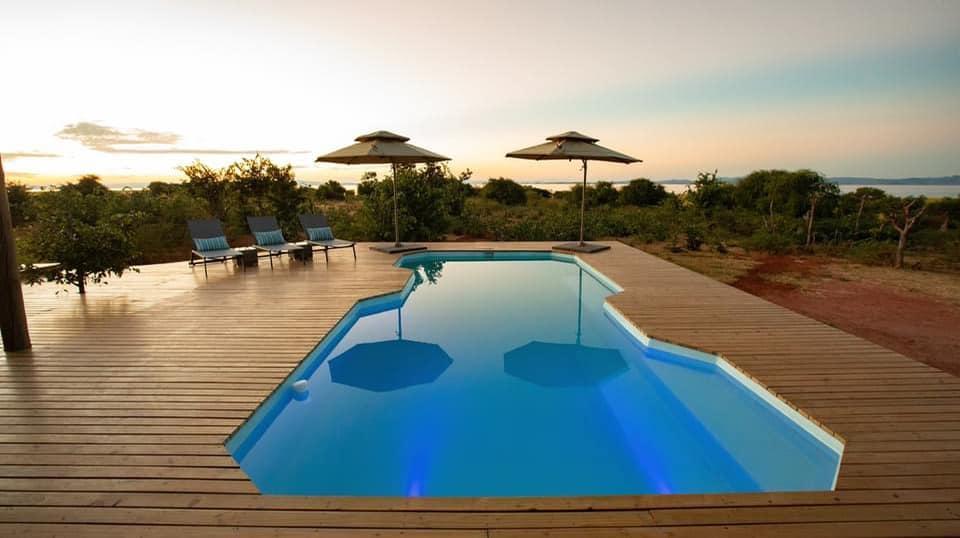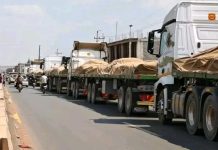Africa-Press – Zambia. Zambia’s tourism sector is set for a bumper year following a few cool moves since late-2022. The sector has hitherto swayed from lousy performance for years. Two of the notable moves were an agreement of the China-Zambia bilateral year and LAM’s resumption of the Maputo-Lusaka line. Now let the fun begin and let government’s top brass forego lazy targets and go big.
The Maputo-Lusaka line will not only bolster the region’s economic and tourism activity and lift productivity, but will also unlock sources of forex and add to Africa’s efforts to foster shared economic development.
This is important as the economy continues to sway from crisis to crisis – exemplified by a depreciating kwacha and rising inflation (after breaching 13% in December). What is the net effect? The number of hunger-stricken people has shot up – beckoning a fall in life expectancy and a rise in social ills (alcohol abuse, school dropouts, teen pregnancies, etc.). For his part, Chimwemwe Mwanza retraced part of the economic malady to the old guard’s borrowing of “billions for consumption [only to sprinkle] some change on infrastructure projects”. The rearview mirror yanks us to the enduring havoc wreaked by the structural adjustment programme (SAP). Founder president Kenneth Kaunda moaned SAP for reducing Zambia’s existence merely “to pay the IMF”, wrote Julius E Nyang’oro in Beyond Structural Adjustment in Africa: The Political Economy of Sustainable and Democratic Development.
So, no matter how tough it is, President Hakainde Hichilema should refrain from yanking a begging bowl or resorting to SAP-type deal. It doesn’t matter who the lender is: Beijing or New York. Hichilema’s focus should be to simultaneously reverse the effects of Team Dununa’s mess and ramp up production to create income opportunities for millions – equitably, across provinces. Quick fixes are anything but.
To switch lanes: government has curiously treated tourism lightly despite its potential to showcase its beauty, grow soft power, and earn billions. Ministers Brenda Tambatamba and Douglas Syakalima will readily cite skills transfer, job creation and other aspects. Finance Minister Situmbeko Musokotwane, who must be closely watching the unfolding maelstrom in Malawi, isn’t only a well-rounded economist but has experienced the effects of forex shortages. Thankfully, he appreciates the underplayed role of tourism in shared economic growth. But, before you shift all blame to the Patriotic Front, look at the incumbents’ record. Their missing of low targets is sadly juxtaposed with a surge in global demand.
You thus wonder to what extent tourism ministers and their top brass are results-orientated or just, as a routine, just trot the globe for meetings: Beijing, Berlin, Dar, Davos, Sandton, Singapore and so on.
At last count, Zambia hosted 1.4-million travellers a year. That is a lowly 2% market share of the 70-million people who visit Africa. In this regard, the 1.5-million target, cited by Tourism Minister Rodney Sikumba, is puny. This year’s target of 2-million is as lazy. While on that, where would the nation’s tally be if it weren’t for Mosi-oa-Tunya Victoria Falls? By the way, that’s the sole Unesco-declared world heritage site in these climes. Indeed, the other half of the falls is in Zimbabwe. Globally, tourism accounts for 10% of employment and contribution to the GDP, versus Zambia’s poor 7.5% on both counts. In contrast, Botswana’s tourism sector accounts for a tenth of jobs.
Independent of tourism, LAM’s re-entry, slashes travel times between Lusaka and Maputo to about three hours from up to 20 hours previously (if you factor in the Ethiopian Airlines’ Addis Ababa connection). By all means, LAM’s move is serious. So is the question of how to sustain demand. SA Airways’ soapie, called suspension-resumption-suspension of flights to Malawi, is instructive.
On the downside, despite its openness and geographic proximity, the landlocked destination is off the radar for holidaymakers, asserted the Mail & Guardian. Zambia has a meditative landscape, plentiful wildlife, thriving art scene, and more. This is a filmmaker’s paradise, but that means little if Sikumba’s team isn’t flying the flag. Furthermore, the country, along Tanzania, is the region’s cradle of freedom. Where else would you find a Cabinet Minister assigned to decolonisation like Simon Kapwepwe was?
Many freedom fighters, including those from the DRC – when Brussels ran the puppet show – found succour in Kenneth Kaunda-led nation. Lusaka housed the offices, guerillas and members of Swapo, Zanu and, later, Malawi Freedom Movement, when Kamuzu Banda unleashed terror. Lusaka is home to Oliver Tambo House and Freedom Camp heritage sites. The Copperbelt has a piece of Cold War history in the Dag Hammarskjöld crash site. The region abounds with historical places and museums, and home to one of the world’s biggest chimpanzee sanctuaries, and great nightlife.
Pity, many khaki-clad tourists barely see that side. Nor do they see other waterfalls, taste African dish, hit dancefloors, sample some Towela Kaira, Rikki Ililonga, and Alick Nkhata, or visit museums and galleries. That is because lazily-designed itineraries send tourists from wildlife sightings to Zambezi and Livingstone and souvenir outlets (sculptures and paintings to mugs, keyrings and T-shirts bearing African maps or images of wildlife). From that predictable box-ticking exercise, many tourists dash to airports without tasting Zed’s way of life or interacting with the everyday, non-postcard, Zambia.
Hichilema acknowledges the missing link in promoting Destination Zambia for leisure and business. If focused, Zed can muster 5-million annual arrivals by 2025 – outdoing government’s lazy targets. This is independent of China-Zambia, a link that could see the partners enhance their cooperation in tourism, culture, youth and other fields.
Prior to LAM’s return, most Maputo-Lusaka travellers, flew via Joburg, a prolonged journey that defies measures to save our planet. Carbon emissions are notable amid natural disasters that rock the globe.
Meanwhile, Zambia has removed visa requirement for tourists from Australia, Canada, and elsewhere, not least China. The new policy does little for the continental market as it excludes neighbouring Congo and African nations north of the equator. It’s an anomaly. For overseas visitors, the policy will enable some nationalities, for the first time sans visa, to crisscross the subcontinent by road to Lake Malawi, Ndola and Kalambo – the cradle of artisanship. Sikumba ought to press for Unesco’s world heritage status for Kalambo, a throwback to the world’s oldest wooden object. Some governments – like Zambia’s – have reportedly not sent nomination proposals for Unesco’s approval. Also missing is Kalambo’s paperwork, an indictment if you consider the relics from hundreds of millennia ago.
Back to the flavour of the year: China. This is the world’s largest source market with annual departures pegged at a sizzling 150 million. For Zed to win just a percent of that would set it up big time. Much as the China-Zambia bilateral Year of Culture and Tourism is a boon, market acquisition requires “a lot more than visa openness and a flag carrier”. The author argued in Abuja-based Premium Times for a comparable and graded tourism industry “replete with human capital, backed by infrastructure.” To become more competitive, this country, a destination described by many as warm and charming (yet unknown to legions of leisure travellers), would do well to arm its hospitality personnel with some French and Portuguese, spoken in neighbouring countries. Don’t forget Mandarin and others.
With so many positive factors in place, what’s stopping Zambia from staging a major turnaround this year? Over to you, Minister Sikumba. Let the sector shoot the lights out. It can. The nation has high hopes.
Shoks Mnisi Mzolo is a roving storyteller with a background in arts & culture and financial journalism. He also works as an independent researcher and is an avid traveller.
For More News And Analysis About Zambia Follow Africa-Press







